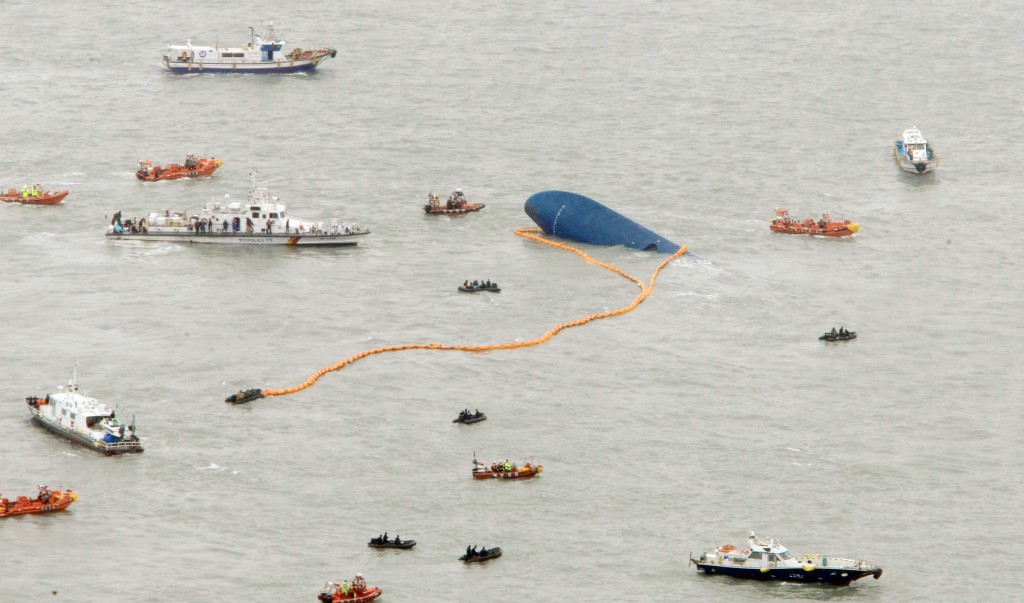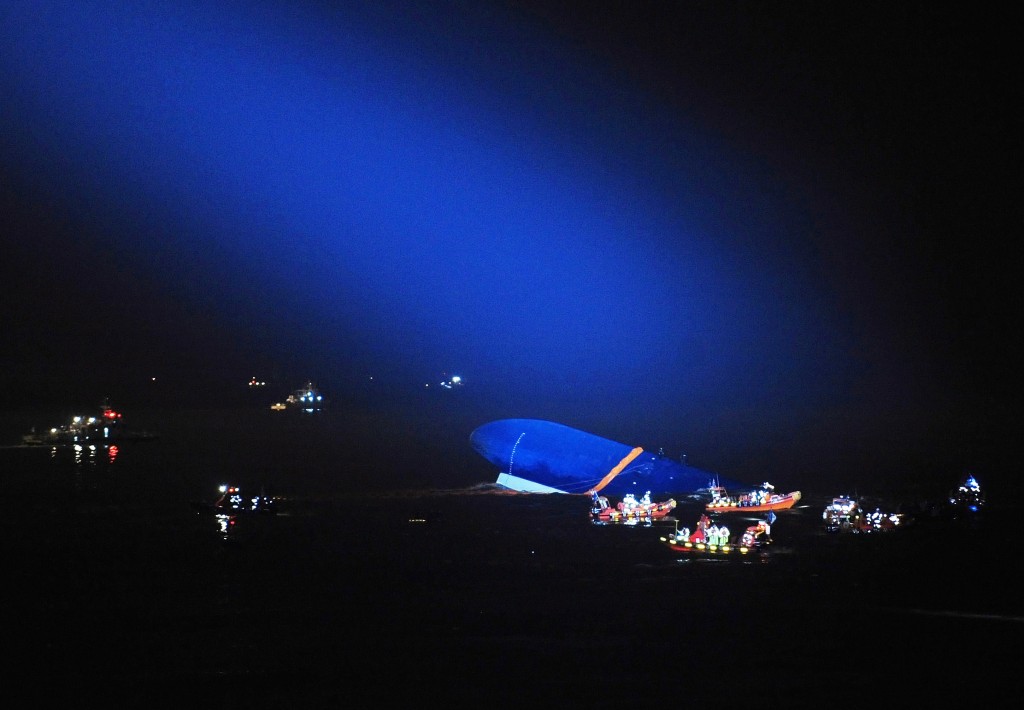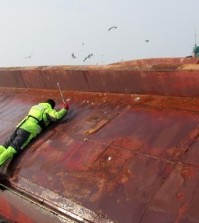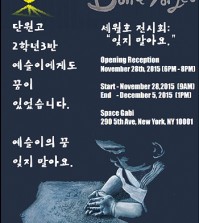- California Assembly OKs highest minimum wage in nation
- S. Korea unveils first graphic cigarette warnings
- US joins with South Korea, Japan in bid to deter North Korea
- LPGA golfer Chun In-gee finally back in action
- S. Korea won’t be top seed in final World Cup qualification round
- US men’s soccer misses 2nd straight Olympics
- US back on track in qualifying with 4-0 win over Guatemala
- High-intensity workout injuries spawn cottage industry
- CDC expands range of Zika mosquitoes into parts of Northeast
- Who knew? ‘The Walking Dead’ is helping families connect
Bad weather slows search operations

Strong winds and waves as well as swift currents, poor weather, low visibility and cold water prevented them from getting inside the shipwreck, raising fears of more casualties. (Yonhap)
By Kang Seung-woo
Full-scale search and rescue operations got under way Thursday for possible survivors of a capsized ferry off the southwestern coast.
In hopes of finding any or all of nearly 300 passengers on the Sewol who remain missing more than 24 hours after the sinking, 555 Navy, Coast Guard and civilian divers and support personnel were on the scene.
Strong winds and waves as well as swift currents, poor weather, low visibility and cold water prevented them from getting inside the shipwreck, raising fears of more casualties.
They continued their mission from midnight, diving more than 10 times, but failed to secure access into the ferry that initially carried 475 passengers, mostly high school students.
Diving operations were suspended around 1 p.m. due to the bad weather.
“We carried out underwater searches five times from midnight until early in the morning, but strong currents and the murky water pose tremendous obstacles,” said Kang Byung-kyu, minister for security and public administration, during a briefing.
According to the Coast Guard, rescue efforts were more focused on saving lives on the surface in the early stages after the accident.
The Coast Guard injected air into the sunken ship to lift it as much as possible in the water in hopes of improving the chances of survival for the missing passengers.
But it was unable to inject air due to bad weather.
The Navy is also concentrating all its efforts on the operation.
It cancelled its plan to participate in a China-hosted multinational fleet review, scheduled from Monday to Friday, with the 4,400-ton destroyer, Munmu the Great, and 2,300-ton frigate Incheon.
“We decided not to participate in the review as a majority of naval vessels are employed in the rescue operation,” a Navy officer said.
On the second day of the rescue mission, a military control tower was set up on the 14,000-ton amphibious landing ship Dokdo to back up the Coast Guard.
Navy Chief of Staff Adm. Hwang Ki-chul ordered the mobilization of all available divers to search the ship.
“He stressed the search operation should continue at nighttime, ordering searchlights to be dispatched to the scene,” the officer said.
Currently, a total of 26 naval ships, along with more than 300 divers from the ship salvage unit, underwater demolition team/SEAL and Special Forces are involved in the search effort.
According to the Coast Guard, three giant floating cranes were heading to the area and the recovery of the submerged vessel could begin today; but it is expected to take one to two months to raise the huge ship.
In 2010, it took a month to recover the sunken naval ship Cheonan, a fifth the size of the ferry.
In addition, the Cheonan was split into two pieces, lessening the weight involved in lifting them out of the water, but the hull of the 6,800-ton Sewol is intact and it also carried vehicles and freight, likely making the recovery effort more difficult.
The depth of the water in the area of the accident and the fact that the ship is upside down are also expected to make salvaging the ferry more difficult.

Rescue mission continued from midnight, diving more than 10 times, but failed to secure access into the ferry that initially carried 475 passengers, mostly high school students. (Yonhap)















